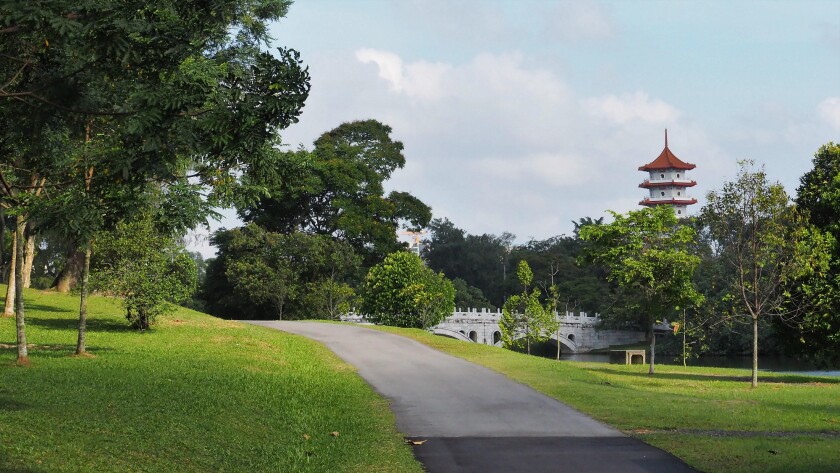Singapore has entered into a new normal, having scaled back many of its Covid-19 restrictions and the supporting measures designed to assist businesses to endure the initial shock of the pandemic.
Without the aid of government-backed interim support, struggling businesses face the unchartered waters of post-pandemic economic recovery, testing Singapore’s recently revamped insolvency laws.
This article discusses emerging trends which will shape Singapore’s insolvency regime and the country’s future as a regional frontrunner in restructuring.
Singapore in Covid-19 remission
As the pandemic subsides, businesses that had been teetering on the edge of insolvency may find some solace in Singapore’s reopening. Yet, their respite may be short-lived. With the phasing out of the temporary Covid-19 initiatives as well as climbing energy prices and interest rates, market uncertainties and global political instabilities, Singapore is already bracing itself for the next economic downturn.
Worse-hit sectors will receive targeted assistance from the government through various grants and a budgeted S$500 million (approximately US$360 million) Jobs and Business Support Package (JBSP).
As part of the JBSP, small and medium-sized enterprises in a wide range of sectors are set to receive pay-outs of S$1,000 per local employee, capped at S$10,000 per firm. These sectors include food and beverage, retail, tourism, hospitality, performing arts and arts education, which bore the brunt of Singapore’s strict Covid-19 curbs over the past two years.
Post-pandemic economic recovery is testing Singapore’s recently revamped insolvency laws
A number of earlier incentives, such as the Jobs Growth Incentive and the Covid-19 Recovery Grant, will also be extended to ease pressure on the labour markets. The expiration of various loan programmes has also been pushed back to help businesses cope with rising inflation. These include the Temporary Bridging Loan Programme (TBLP), originally introduced to provide easy access to working capital, which was renewed for the third time to September 30 2022.
The TBLP allows eligible businesses to borrow up to S$3 million, with a repayment period of up to five years, and a cap of 5% per annum on interest rates charged by participating financial institutions (PFIs).
In particular, the government will take on 70% of the risk-share on new loans under the TBLP. In the event of a default, the PFIs can make a claim with Enterprise Singapore, a government agency that encourages enterprise development, for the unrecovered amount in proportion to the agency’s undertaking.
Singapore’s insolvency and restructuring framework
The long-awaited Insolvency, Restructuring and Dissolution Act 2018 (IRDA) came into force on July 30 2020, at the height of Covid-19. The decision to push ahead with the omnibus legislation at the height of a global pandemic reflects Singapore’s commitment to transforming its insolvency framework.
Before the IRDA, Singapore’s corporate and personal insolvency laws were fragmented across various pieces of legislation (Bankruptcy Act (Cap. 20), Companies Act 1967 (Cap. 50) and the respective subsidiary legislation). With the aim of simplifying and modernising the patchy framework, several rounds of recommendations were made by experts in the field, who pushed for the consolidation of Singapore’s insolvency regime under one roof.
It was clear that change was needed. This culminated in a three-pronged reform to bring Singapore’s restructuring ecosystem up to date.
The first and second phases, implemented in 2015 and 2017 respectively, brought a slew of amendments that called for a more refined discharge process for bankrupts and proposals to mirror US and European reorganisation processes (such as the cross-class cram-down mechanism).
The final phase, which materialised in 2020, saw a complete overhaul of the insolvency system, with the IRDA replacing the insolvency provisions under the Companies Act and the repealing of the Bankruptcy Act in its entirety.
Processes and procedures under the IRDA
Under the IRDA, resilient debtors have different options to attempt a revival before resorting to dissolution. These comprise rehabilitative procedures (such as a scheme of arrangement and judicial management), culminating in winding-up procedures (otherwise known as liquidation) for companies that have to be shut down.
Scheme of arrangement (SOA)
A distressed debtor may apply to the Singapore court to summon a meeting of its creditors to approve a SOA between itself and its creditors (or a class thereof). The approval threshold requires the consent of the proposed scheme by more than 50% of creditors (or a class thereof) comprising 75% in value (see Section 70(3) of the IRDA).
In simple terms, a SOA is a court-approved compromise agreement between a debtor and its creditors to facilitate the company’s repayment of its debt obligations. The distinguishing feature of SOAs is the court’s ability to cram-down on dissenting creditors (inspired by Chapter 11 of the US Bankruptcy Code). This allows viable companies to overcome the difficulty of obtaining consent from each and every creditor intended to be bound (which could result in a beneficial scheme being frustrated by a minority of creditors).
However, the court’s discretion in approving the SOA is not unfettered: the court must be satisfied that the scheme does not discriminate unfairly between two or more classes of creditors, and is fair and equitable to each dissenting class (Section 70(3)(c) of the IRDA).
SOAs are unique in that the company’s directors would retain office and continue exercising their managerial powers. Control of the company remains with management, though it is commonplace for financial advisers to be appointed to assist with negotiations and to ensure that the scheme is implemented in accordance with its terms.
Notably, a company may apply to the court for approval of a pre-packaged scheme, which dispenses with the need to hold a meeting of creditors. This application is subject to the pre-condition that the court must first be convinced that had a meeting of creditors been summoned, each relevant class of creditors would have approved the scheme (Section 71(3) of the IRDA).
While a company with a finalised scheme may apply for a moratorium (Sections 64(8) and (14) of the IRDA), a company eyeing a SOA may also avail itself of an automatic interim 30-day moratorium by making an application to a court. Such an order for a moratorium will also have extraterritorial effect, being binding on all foreign creditors to the extent that they are subject to Singapore’s in personam jurisdiction. This is a brand-new feature of the IRDA. It allows for a distressed company to take advantage of the enhanced moratorium as long as it is able to satisfy the court of its intention to move forward with a scheme, subject to satisfying the statutory requirements (Section 64 of the IRDA).
Judicial management (JM)
Unlike other remedial measures, which focus on more permanent solutions, JM operates as a kind of temporary freeze during which proposals for the company’s future can be devised.
Under JM, a judicial manager is appointed to take over the management of a distressed company, with a mandate to ensure the survival of the company, or at the very least, to obtain a better outcome than a full-fledged winding up, in terms of the realisation of the company’s assets.
A creditor, instead of having to apply to a court for a JM order, has the option of calling a meeting of the company’s creditors for the purpose of passing a resolution for the company to be placed under JM. The resolution requires a majority of the creditors in number and value in order to pass.
This procedure obviates the need to incur court expenses (Section 94 of the IRDA). However, an application to court for a JM order can also be made on behalf of any company liable to be wound up under the IRDA, by persons with requisite locus standi. These comprise persons/entities having the right and/or capacity, including a Singapore-incorporated company (acting via a member’s resolution), its directors (authorised by a directors’ resolution), and/or its creditors – see Section 88 of the IRDA read with Section 91 of the IRDA.
Once a judicial manager is appointed over a company, its board of directors is rendered functus officio; while directors are not removed, their control is assumed by the judicial manager (Section 99(2) of the IRDA).
This diversion of directors’ powers to the judicial manager is not permanent. If the company is able to get back on its feet financially, the JM will terminate, and there will be a return to the status quo ante, with management responsibilities returned to the board.
The filing of an application for JM also triggers an automatic moratorium, although the moratorium arising from a JM is less flexible and more limited in scope than one filed in connection with a SOA. For example, unlike a moratorium filed in support of a scheme, there is no option to extend protection to holding companies or subsidiaries.
Winding up (WU)
An insolvent company can be wound up voluntarily by its members or creditors (voluntary WU). It may also be involuntarily wound up by a court order (compulsory WU). Additionally, a solvent company can be liquidated voluntarily by way of a members’ voluntary WU (for instance, if the company is no longer active).
In a recent landmark judgment in Sun Electric Power Pte Ltd v RCMA Asia Pte Ltd [2021] 2 SLR 478, Singapore’s Court of Appeal held that the cashflow test is now the “sole and determinative test” when assessing whether a company is deemed insolvent. Under this test, solvency is determined by the company’s ability to meet all debts as and when they fall due within a 12-month period.
The cashflow test is now determinative when assessing whether a company is deemed insolvent
Further, a presumption of insolvency arises if: (i) a company, having been served with a statutory demand for a sum of S$15,000 or above, fails to make payment on the same to the creditor’s reasonable satisfaction three weeks from the time the demand was served; or (ii) a creditor is unable to recover a judgment debt from the company (Section 125(2)(a) of the IRDA).
Upon the filing of a WU application, no new action or proceeding may be commenced against the distressed company (except with leave of the court). Any ongoing action may be stayed by way of an application, or by the court of its own accord (Section 133(1) of the IRDA).
Unlike a JM, once a WU order is made, the company’s board of directors ceases to have any executive function (Sections 164(2) and 167(4) of the IRDA). The power and duty of running the company falls to the Official Receiver or private liquidator (as applicable), whose conduct of the liquidation is scrutinised by a committee of inspection (consisting of various creditors and contributories).
Standout features of the IRDA
A discussion of Singapore’s insolvency ecosystem would be incomplete without touching on the most noteworthy addition to the IRDA. This is the imposition of a restriction on the operation of ipso facto clauses in certain circumstances (a concept that was borrowed from the Canadian insolvency legislation).
Section 440 of the IRDA stunts the ability of contractual counterparties to enforce accelerated payment clauses contained in any agreement with the debtor; to modify such a right; or to amend or terminate any agreement by reason only that a debtor is undergoing a creditor-initiated SOA or JM, or that it is insolvent.
However, the restriction under Section 440 is not absolute. A counterparty seeking to avoid the application of this section may seek a court declaration that Section 440 does not apply if it would cause the counterparty significant financial hardship. Certain classes of contracts – such as government contracts, ship charters, and eligible financial contracts (the scope of which has been deliberately left broad) – are also exempt from the prohibition under Section 440.
Section 440 aims to support distressed companies that rely on key contracts for their continuity. The legislation will not prohibit a person from requiring payments to be made in cash for goods, services, or leased property after the commencement of the proceedings, and it will not require the further advance of money or credit. To tie up loose ends, anti-avoidance measures have been enacted to invalidate any contractual term that has the effect of seeking to avoid Section 440.
Another fresh concept is that of rescue financing, which only gained traction in 2017 with the amendments to the Companies Act. It was then transplanted to the IRDA. Debtors aiming for a SOA or undergoing JM may obtain financing from other creditors, with safeguards being put in place to grant such generous creditors super priority over all other claims and administrative expenses, in the event of a failed resuscitation of the debtor company (Sections 67 and 101 of the IRDA).
The IRDA also provides that officers of distressed companies whose actions have been wrongful do not get off the hook (Sections 238 and 239 of the IRDA). Under the wrongful trading provision, a director is personally liable when a company incurs debts or liabilities when insolvent (or becomes insolvent as a result) without any reasonable prospect of fulfilling its obligations. Directors also remain personally liable for fraudulent trading and breach of fiduciary duties.
Finally, certain key antecedent provisions have survived the sweeping changes to Singapore’s restructuring ecosystem. For example, a liquidator or judicial manager may claw back assets that have been dissipated by a company in transactions that were undervalued (Section 224 of the IRDA; Part 9, Division 3 of IRDA).
Further, the court may impugn any transaction that was intended to prefer any creditor over others (Section 225 of the IRDA; Part 9, Division 3 of IRDA). However, a transaction that is actuated by proper commercial consideration will not constitute a voidable preference. A genuine belief in the existence of a proper commercial consideration may be sufficient even if, objectively, such a belief might not be sustainable.
The future of Singapore’s insolvency landscape
Cross-border insolvency
Singapore has adopted the UNCITRAL Model Law on Cross-Border Insolvency. This allows foreign companies (a) to commence and/or participate in proceedings under Singapore’s insolvency laws and (b) to apply to the Singapore High Court for recognition of foreign insolvency proceedings.
The court will only deny recognition to any foreign insolvency proceedings if such recognition is contrary to public policy and/or where it undermines the administration of justice. To illustrate, in a recent landmark decision in H & CS Holdings Pte Ltd v Glencore International AG [2019] EWHC 1459 (Ch), the High Court of England and Wales recognised a Singapore Court-ordered moratorium as a foreign main proceeding.
Under Article 20(1) of the Model Law on Insolvency, applicants involved in foreign main proceedings are entitled to various reliefs, including stay of proceedings, execution against the debtor’s assets, and the suspension of any rights by debtors to transfer, encumber, or otherwise dispose of any of the debtors’ assets.
Foreign businesses looking to Singapore for its insolvency offering must first show a “substantial connection” with Singapore to bring themselves within Singapore’s jurisdiction. Section 246(3) of the IRDA sets out a list of factors that the Singapore Court will take into consideration in establishing such a connection. These include: Singapore being the centre of main interests of the company; the company carrying on business in Singapore; the company having substantial assets in Singapore; the company being registered under the Companies Act; the company enlisting Singapore law as the governing law of a loan or other transaction; and the company’s submission to the Singapore court’s jurisdiction for the resolution of a dispute.
These factors are not meant to be exhaustive or definitive: the Singapore court ultimately has the discretion to decide whether any particular case has a substantial connection to the jurisdiction (Honourable Justice Aedit Abdullah in Re PT MNC Investama TBK [2020] SGHC 149).
Insolvency mediation: watch this space
Alongside an increase in debt restructuring opportunities in Singapore, there is an emerging trend towards insolvency mediation.
Insolvency mediation can be an attractive option for debtor companies to arrive at compromise agreements with creditors, to try and achieve win-win solutions that give distressed businesses a chance to recover financially, while giving creditors more options to try and recoup debts that may otherwise be unrecoverable under more formal insolvency proceedings.
Continued economic and public-health challenges will no doubt test the restructuring framework in Singapore. However, the IRDA is a timely step in the right direction to position Singapore for the coming challenges ahead.





